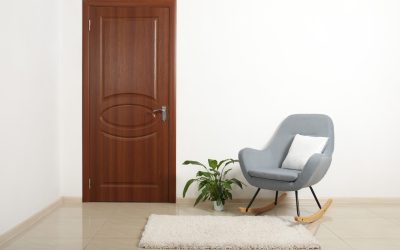In today’s fast-moving business environment, entryway security is more than just a first impression—it’s a frontline defense. From retail stores to office buildings, healthcare facilities to warehouses, every workplace in the U.S. must meet increasing demands for safety, durability, and code compliance.
And while alarms and locks get the spotlight, the commercial door frame is the unsung hero—quietly doing the heavy lifting to support security, functionality, and long-term resilience.
Why Door Frames Matter for American Businesses?
The average commercial door opens and closes thousands of times per year. Without a properly engineered frame, even the most advanced door system can fail to meet safety standards—or worse, leave your business vulnerable to forced entry, fire hazards, or premature wear.
High-performance door frames:
- Provide structural integrity under daily use and impact
- Support fire- and intrusion-resistant features
- Ensure code compliance in high-risk or high-traffic areas
- Reduce air leakage, noise pollution, and thermal transfer
They’re not just accessories—they’re infrastructure essentials.
Core Features of Secure Commercial Door Frames
Choosing the right frame requires more than a size match. Leading commercial door frames offer integrated features that align with your facility’s operational and regulatory needs.
Key Attributes Include:
- Reinforced Construction: Most often crafted from 16- or 14-gauge steel for increased resistance to warping, tampering, and high use.
- Fire and Smoke Ratings: UL-classified or fire-labeled to meet local and national fire codes.
- Flexible Mounting Options: Compatible with drywall, masonry, block, or poured concrete walls.
- Finish Options: Powder-coated, primed, or stainless finishes to suit aesthetics and environmental durability.
- Security Compatibility: Built to house panic hardware, access control devices, mortise locks, or exit alarms.
These features allow frames to function seamlessly in both new construction and retrofit projects, offering flexibility across industries.
Matching Frame Solutions to Business Needs
Not all door frames serve the same purpose. Selecting the correct type depends on where, how, and why they’re being used.
Assessment Checklist:
- Traffic Patterns
Heavily used areas (e.g., main entrances or warehouse access) demand reinforced frames and welded corners. - Security Requirements
Facilities with sensitive data, expensive inventory, or limited-access zones may require tamper-resistant components and integration with electronic access control. - Code Compliance
Ensure selected frames meet local ADA, NFPA, and IBC codes—especially regarding fire egress, door swing direction, and accessibility. - Design Consistency
For customer-facing or corporate environments, select frame finishes that align with your branding and interior design.
Working with a licensed installer ensures that your chosen solution is properly sized, anchored, and code-compliant.
Long-Term Advantages for U.S. Workplaces
Investing in commercial-grade door frames isn’t just about meeting a checklist—it’s about building peace of mind into your infrastructure.
Business Benefits Include:
- Reduced liability through fire- and ADA-compliant hardware
- Fewer repairs and lower lifetime maintenance costs
- Increased security and theft deterrence
- Enhanced building efficiency via insulation and door seal compatibility
Whether you’re expanding facilities or upgrading aging infrastructure, commercial door frames provide a reliable return on security investment.
Build smart. Protect more. Start at the frame. Schedule a door and frame consultation or ask for design options tailored to your property.

